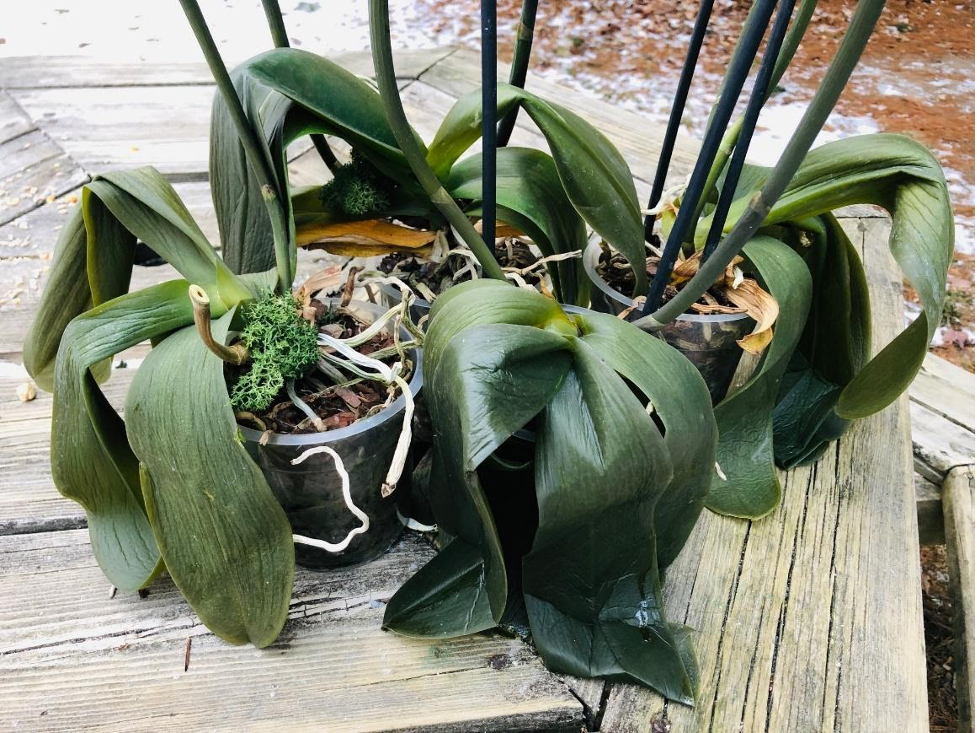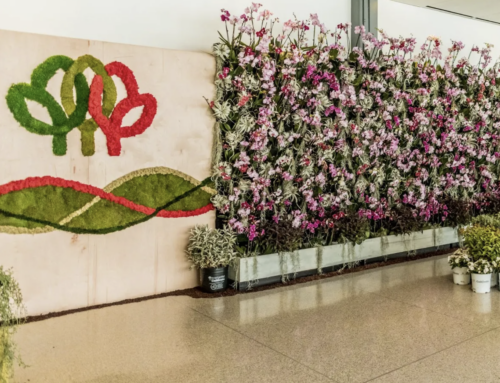We like having plants around us even in winter and especially in the north. We can go to great lengths to find exceptional plants to brighten winter’s gloom inside our homes. Once inside, as long as the house is kept comfortably warm, the plants typically handle the winter months. It should be noted that some house plants are more vulnerable to cold damage than others and when the thermometer dips – they can suffer. Some of those more sensitive to cold temperatures: Orchids (Phaleanopsis sp.), Mandevilla, Bougainvillea, Oriental Hibiscus, and Poinsettia.
Protecting your plants from low temperatures
Be advised of cold conditions that subject plants to harm
- Before buying a houseplant in the winter, inquire about its sensitivity to cold or conduct your own information search.
- Consider The transport from the toasty warm garden center to your vehicle, then travel to your home. If outdoor temperatures are 50 F or colder and you’re not certain of your plant’s cold tolerance, it’s best to have your plants covered in a sleeve, or a loose-fitting bag, assuming most (responsible) garden centers would provide during the cold months. With no protection available, and freezing temperatures outdoors, I have simply used newspaper and tape, forming a loose cocoon or shell around the plants.
-
When it is frigid outdoors, freezing weather, and below, if possible, have the car heater on when you transport your plants. A colleague told of a hasty transport of Poinsettia plants from the hot greenhouse to their vehicles. From the blast of freezing air during transport to the vans to the time it took for the van heaters to warm up – many leaves fell off within a day.
-
In these transfers, it is best to place plants inside, toward the front of the car and not the trunk. On one occasion in my college years, with mild temperatures around 40*F, I assumed heat would eventually circulate to the trunk. This was based on a scientific comparative study where beer and soda were also placed in the trunk with the plants. In previous winter car drives, at the trip’s end, we found beverages still needed a little chilling before consumption. Therefore, the likely conclusion was there was enough heat making its way to the trunk to keep the plants safe. False assumption, there was not; don’t count on a heated trunk as the plants took a beating and suffered from cold damage.
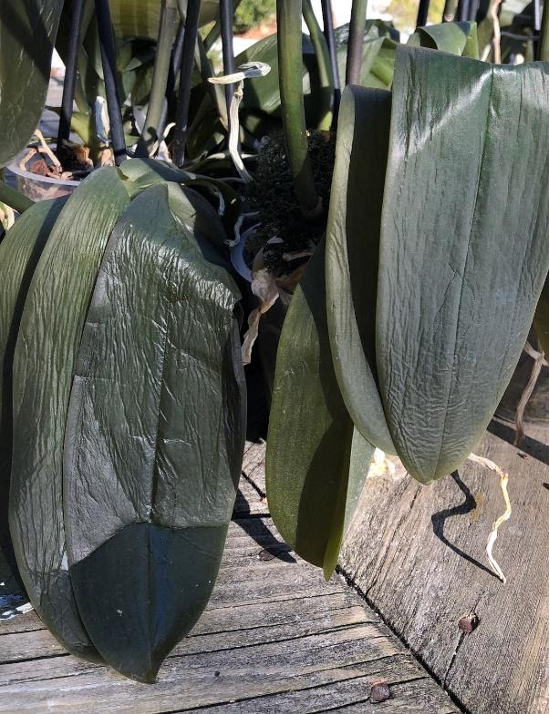
This Orchid will not recover when leaves are damaged to this extent.
- Before buying a houseplant in the winter, inquire about its sensitivity to cold or conduct your own information search.
- Consider The transport from the toasty warm garden center to your vehicle, then travel to your home. If outdoor temperatures are 50 F or colder and you’re not certain of your plant’s cold tolerance, it’s best to have your plants covered in a sleeve, or a loose-fitting bag, assuming most (responsible) garden centers would provide during the cold months. With no protection available, and freezing temperatures outdoors, I have simply used newspaper and tape, forming a loose cocoon or shell around the plants.
-
When it is frigid outdoors, freezing weather, and below, if possible, have the car heater on when you transport your plants. A colleague told of a hasty transport of Poinsettia plants from the hot greenhouse to their vehicles. From the blast of freezing air during transport to the vans to the time it took for the van heaters to warm up – many leaves fell off within a day.
-
In these transfers, it is best to place plants inside, toward the front of the car and not the trunk. On one occasion in my college years, with mild temperatures around 40*F, I assumed heat would eventually circulate to the trunk. This was based on a scientific comparative study where beer and soda were also placed in the trunk with the plants. In previous winter car drives, at the trip’s end, we found beverages still needed a little chilling before consumption. Therefore, the likely conclusion was there was enough heat making its way to the trunk to keep the plants safe. False assumption, there was not; don’t count on a heated trunk as the plants took a beating and suffered from cold damage.

This Orchid will not recover when leaves are damaged to this extent.

An aloe plant shows the effects of frost.
Once Safely Inside the Home
For most of the summer season, house plants are placed near windows to receive adequate sunlight. With the lower light levels of the winter sun, one might think to move plants even closer to windows to gather as much of the sun’s rays as possible. It would be wise to be sure that no drafts coming in from the windows. Close proximity to outside doorways that open and close is also a concern. These locations, which allow for a blast of cold air, will take their toll on plants with origins in the tropics.
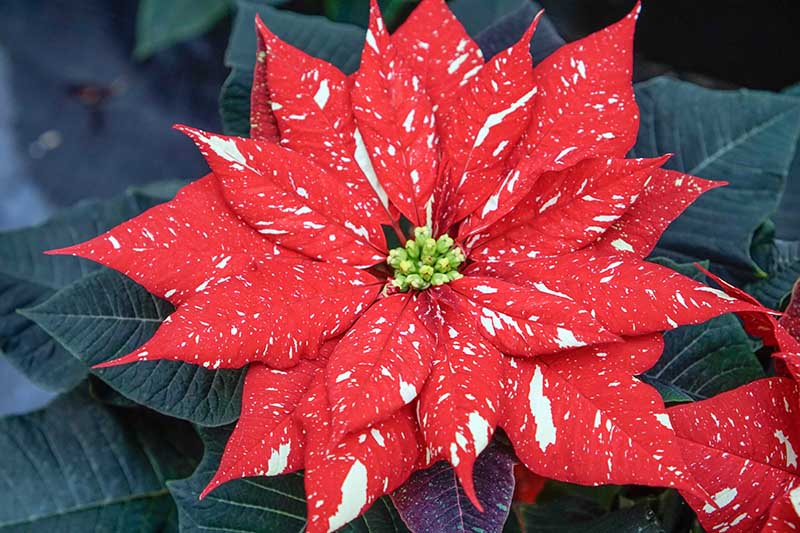
Poinsettia – popular, but cold-sensitive plant of the holiday season
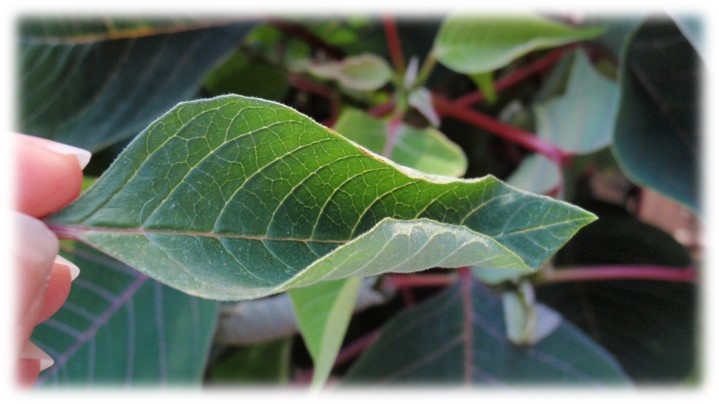
Curled leaves of poinsettia show stress from exposure to 40F temperatures

An aloe plant shows the effects of frost.
Once Safely Inside the Home
For most of the summer season, house plants are placed near windows to receive adequate sunlight. With the lower light levels of the winter sun, one might think to move plants even closer to windows to gather as much of the sun’s rays as possible. It would be wise to be sure that no drafts coming in from the windows. Close proximity to outside doorways that open and close is also a concern. These locations, which allow for a blast of cold air, will take their toll on plants with origins in the tropics.

Poinsettia – popular, but cold-sensitive plant of the holiday season

Curled leaves of poinsettia show stress from exposure to 40F temperatures
-Rob McCartney, Horticulturist
Please feel free to contact me with any questions or for more info at: [email protected]

